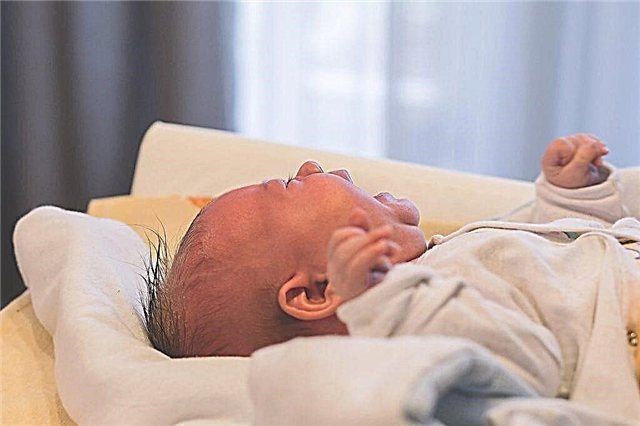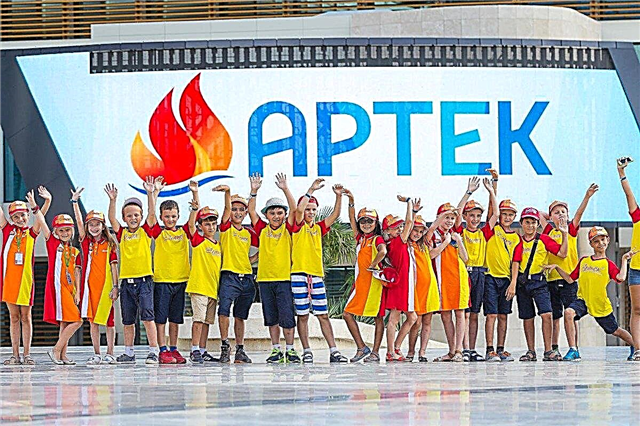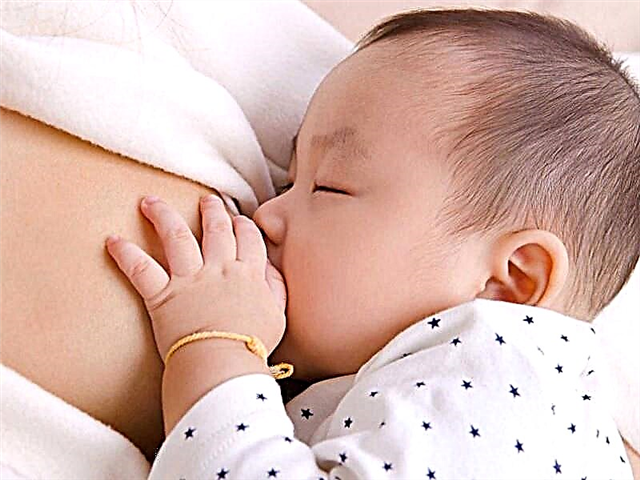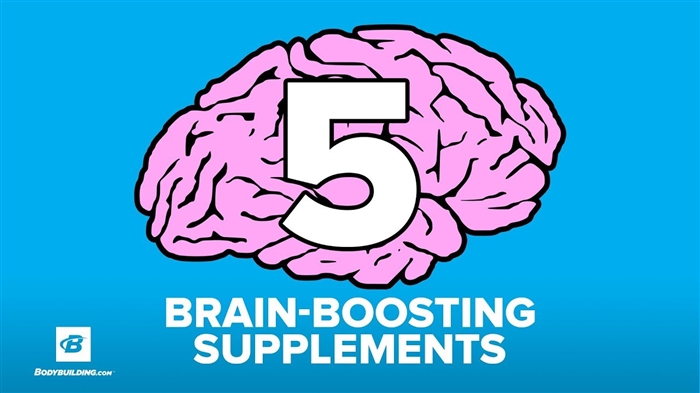How is massage useful for newborns?
The mechanism of the beneficial effect of this manipulation on the baby's body is not yet fully understood, but its effectiveness is obvious and visible with an "unaided eye".
According to one of the theories, touching and stroking the body of a child stimulates the work of the musculoskeletal, nervous, cardiovascular and respiratory systems, normalizes the physiological and biochemical processes in them.
Babies who receive massage from birth:
- gain body weight better;
- have fewer colds;
- have higher indicators of physical development, relative to their peers.
Scientists have proven that if a child receives enough touches in the first year of life, then he develops faster (this is due to the fact that during this contact with the baby's skin, the production of myelin increases, which is part of the structure of the nerve fiber). In addition, it is known that if a baby at an early age has an insufficient amount of tactile sensations, then in adulthood he is less stress-resistant and unsure of himself;
- have a stronger bond with their mother (during preventive massage by her). When this manipulation is carried out by the mother, lactation also improves;
- sleep better and less capricious during wakefulness;
- easier to tolerate colds;
- develop a dynamic stereotype faster.
Foreign scientists have found that if a dad gives a massage to a child born by cesarean section, then the connection between them in the future and in the present can be even more pronounced than with mom. The kid reacts better to his presence in infancy, shows more emotions in relation to him (smiles, walks, laughs, pulls hands, etc.).
The main indications for massage for newborns

Carrying out this manipulation is useful for both healthy children and those with certain physical disabilities. However, one should remember and know that for the latter it is of the greatest value and is performed for medicinal purposes.
The indication for the appointment of this procedure for therapeutic purposes is the presence of the child:
- dysplasia of the hip joints;
- increased or decreased muscle tone;
- congenital dislocation of the hip;
- congenital muscle torticollis;
- varus or valgus position of the feet;
- scoliosis;
- neurological pathology (cerebral palsy, etc.);
- pronounced weakness of the muscular and ligamentous apparatus;
- diseases of the respiratory system;
- increased excitability;
- sleep problems;
- poor appetite;
- pathologies of the gastrointestinal tract (colic, constipation, etc.).
If parents can perform preventive massage, then only a qualified specialist should perform the therapeutic massage so as not to harm the baby.
Are there any contraindications?
A contraindication for the appointment and implementation of this manipulation is the presence of the child:
- skin rashes or a purulent inflammatory process on the skin, subcutaneous tissue, lymph nodes, muscles, bones;
- high body temperature;
- malignant neoplasms;
- diseases in which fragility and soreness of bones increases;
- acute nephritis, hepatitis, cystitis;
- active form of tuberculosis;
- epilepsy, seizures;
- congenital heart defects, in which cyanosis is expressed and decompensatory phenomena are noted;
- large hernial protrusion (umbilical, femoral, inguinal, scrotal), which is prone to infringement;
In these cases, the procedure can only be carried out under the supervision of a doctor in order to avoid infringement of the hernia.
- severe malnutrition (atrophy);
- blood diseases;
- increased nervousness (in this condition, the tone of the flexor muscles increases);
- severe rickets;
- pulmonary insufficiency;
- bleeding or tendency to it.
When can parents do the massage themselves and when should you trust a specialist?
If the parents independently do preventive massage to the baby (after the specialist has taught them this), then this will be the most beneficially influencing procedure for him. Because in this way mom or dad, performing this manipulation, establish contact with the baby, do not irritate him (for example, as unfamiliar "aunts and uncles").
Parents can independently perform massage only for preventive purposes with the aim of:
- improving the physical development of the child;
- elimination of colic and normalization of the gastrointestinal tract;
- reducing the excitability of the nervous system;
- improving his appetite and mood;
- normalization of muscle tone and muscle contractility;
- development of motor skills.
If in newborns and infants this procedure is predominantly advisory, then in prematurely born children it is mandatory (and is performed for therapeutic purposes by a specialist).
In the presence of any pathologies that are indications for massage, it should be carried out exclusively by a qualified specialist.
At a newborn age, babies have physiological hypertonicity, therefore, during massage, the movements should be exclusively stroking and in no way violent (with extension, stimulation and kneading of the body), because in this way it is possible to achieve not only increased hypertonicity, but also injury to the child ...
How to properly prepare your baby for a massage? Memo to parents
The use of oils and creams during this procedure is not recommended for a newborn who has healthy skin (does not flake off, it does not have cracks).
It is very important to properly massage the newborn. For this it is important that:
- the air temperature was as comfortable as possible - twenty to twenty-three degrees Celsius;
Most often, the cause of crying during a massage is fright (a baby from three to four months of age and up to three or four years old can be frightened of strangers). Therefore, if possible, it is better to make an acquaintance with the child, and not immediately proceed with the implementation.
- there were no drafts and noise in the room;
- the child was not very hungry (half an hour before a meal or an hour and a half after it).
It is recommended not to start massage before the child is five to six weeks old! However, this does not include stroking movements.
- the duration of the first session was no more than ten minutes;
- the work surface was clean, not cold, even and hard;
- the hands of the master were clean, warm, with short-cut nails and no rings;
- hand movements were smooth, stroking, and not violent.
During this procedure, it is forbidden to influence the area of the kidneys, liver (in the form of tapping, patting), as this can contribute to the disruption of the work of these organs. Babies under three months old are prohibited from affecting the fontanel, elbow bends, inner thighs, axillary, popliteal, knee areas.
- the course of medical and treatment-and-prophylactic procedures was not more often than once a quarter (10 - 12 sessions).
An approximate set of exercises for massage a healthy newborn
Stroking is the cornerstone of preventive massage. It is they who begin and finish this procedure. Depending on what technique of this manipulation is carried out, and on the age of the baby, it is performed with one or two hands. The movements of the limbs can be circular, as well as along the body, and across it.
The use of circular movements is used mainly on the abdomen.
In addition to stroking, kneading, rubbing and vibration are also used, which are performed individually for each child (depending on age, body weight, diseases, etc.). The implementation of all these techniques should have a certain sequence, so you shouldn't massage the child yourself “as you like”. Before proceeding with this procedure, you need to learn from either a pediatrician or a professional massage therapist, since disrupting the order of execution can harm the baby's health.
Most often, the sequence of actions for this manipulation is as follows: stroking, kneading, stroking, vibration, stroking. Stroking movements, as a rule, are performed five to six times, and the subsequent nine to twelve.
Back
When performing this procedure, it is important not to affect the area of the spinous processes on the back area, as this can cause painful sensations in the baby.
When a massage is performed for infants on the back area, the child should lie on his tummy. It is better to start not immediately with it, but first with the feet. To do this, you must first perform stroking and point movements from the feet to the hips. After that, it is recommended to massage the handles, and only then the baby's back.
Back massage should be performed, starting with stroking the back of the palms from the lumbar region to the shoulders (from bottom to top), followed by the transition from the spinal column to the ribs (to the sides). And then do everything in reverse order with your palms to the baby's buttocks.
Tummy
Massage for babies on the abdomen should be performed in a supine position, in a circular motion (clockwise). In this case, it is important not to put pressure on the organs and bypass the liver area.
After stroking this area, it is recommended to rub the transverse and oblique muscles as follows: the palms of the massager are set in the lumbar region and simultaneously move along the external oblique muscles of the abdomen (until the palms are connected over the navel area).
Colic massage

Babies up to three to four months of age quite often have intestinal colic and do not need to "stuff" them with medications for a preventive purpose - you can only do with a massage of the abdomen.
This manipulation is recommended for children in a certain sequence. This requires:
- lay the baby on a hard surface;
- the masseur's hands need to be warmed to keep them warm;
- stroking the newborn's tummy. The palms of the person who performs the massage should be folded in the form of a "house" and perform massaging and slightly pressing movements from the right side of the abdomen to the left, while bypassing the liver protruding from the kids;
There should be stroking after each pressure.
- carry out the movements of the "water mill" (palms of the masseur alternately move up and down along the midline of the abdomen);
- perform a counter stroking (the massager moves the left hand on the stomach upward, and the right hand downward, thereby repeating the course of the large intestine). After that, you need to stroke the tummy in a circular motion;
- perform a U-shaped stroking clockwise (the massage therapist moves his hand from right to top, top to left, left to bottom).
Exercise for respiratory diseases
Performing drainage massage (when prescribed by a doctor) is an important and basic component in the treatment of bronchitis, obstructive bronchitis, inflammatory processes in the lungs, both in adults and in children under one year old. Thanks to him, phlegm is removed from the respiratory tract, blood flow in the respiratory organs improves, and the healing process is accelerated.
Before the baby is given a drainage massage, he must be laid on a pillow or roller, while the location of the chest should be higher than the larynx (thanks to this position, sputum will be able to more easily overcome the path from the lower bronchi to the larynx).

Carrying out this type of massage implies carrying out:
- warming up movements (stroking, rubbing for 1-5 minutes). They should be smooth, bypassing the area of the spinal column, heart, kidneys;
- alternate taps with fingertips in the intercostal spaces, thereby stimulating and activating breathing (the sequence of their execution starts from the bottom and gradually moves up). The amount is approximately 16-20 times;
- pinching movements from the middle of the back to the shoulder girdle (on both sides 16-20 times);
- exercises "wave" (the skin is moved from the lower back up to the shoulder girdle, while retreating from the middle of the back to the sides);
- stroking the back with palms (while it is necessary to firmly press the skin, starting from the lumbar region to the shoulder girdle 15-20 times);
- massage movements with the edge of the palm (while they should be slightly tilted) moving diagonally from the spinal column to the shoulder girdle;
- slightly squeezing movements from the diaphragm moving upward.
After all these manipulations, it is important to seat the baby and help him to clear his throat. In children under one year old, you can press on the root of the tongue with a spatula, spoon or clean forefinger (nails should be cut short). Thus, mucus that has accumulated in the airways will be released more easily and quickly. Older children should be asked to cough.
In older children, in addition to drainage massage, a lot of different breathing exercises can be carried out. Examples are:
- "Watch". In this case, the baby should stand upright, his legs should be apart, and his arms lowered. Further, he should wave his arms, without bending them, back and forth, and at the same time say "tick-tock" (10-15 times);
- "Little train". The child should walk around the room, bending his arms at the elbows and waving them with the words “chukh-chukh” (25-30 sec);
- "The ball is flying." During this exercise, the kid needs to stand upright, take the ball in his hands and stretch them in front of him. Throw the ball out of the hands in front of you and say "y-x-x" (5-7 times);
- "skier". With this exercise, the child needs to simulate skiing for one and a half to two minutes. At the same time, exhaling, he should pronounce "mmm-mm-mm", etc.
What time to massage your baby? Session duration
It is recommended that the course of therapeutic massage does not coincide with the prophylactic vaccinations.
These procedures are recommended for preventive purposes daily. It is recommended that the session begins 30 minutes before the baby has eaten or 1 - 1.5 hours after that. Massage for newborns at home should be no more than 5–40 minutes (the duration increases gradually).
Conclusion
All parents want their children to grow up healthy, beautiful and smart, but not everyone knows that massage can accelerate their physical and mental development. However, like all therapeutic and preventive measures, it has some contraindications, so it is important to consult a specialist so that he allows this procedure to be carried out and explains how to do it correctly.
You should not arbitrarily and incorrectly perform this manipulation to the child, because by performing it, you can not only not improve his physical development, but also harm the baby. Do everything only in conjunction with the pediatrician. Take care of your children! Be healthy!
Bibliography
- Yalovchuk A.V., Child and his care, Kharkiv, 2012.
- Muginova E.L., gymnastics and massage for young children, M., Medicine, 2004.
- Krasikova I.S., Children's massage, S.-Pb, 1997;
- Irina Krasikova. Children's massage. Massage and gymnastics from birth to three years old, 2016.
- Valeria Fadeeva. Massage and gymnastics for the little ones from birth to one year, 2011.



